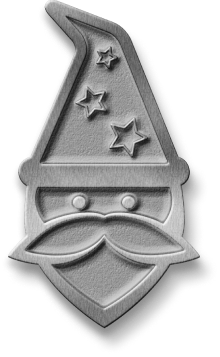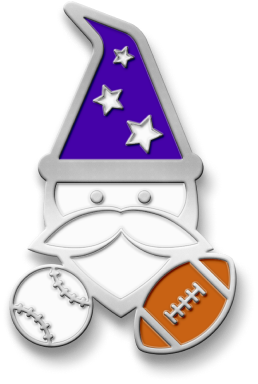Military vehicles and memorabilia embody both technological advancement and human resilience. They represent the ingenuity of engineers, the bravery of those who operated them, and the historical eras in which they were deployed. Cars, trucks, tanks, and aircraft revolutionized military strategy, while collectible models, pins, and badges keep their legacy alive for future generations. Understanding these artifacts provides a glimpse into military history and an appreciation for how these machines shaped modern society.
Military Cars
Tanks and aircraft have often overshadowed military cars, yet cars have also been vital for mobility and command. These vehicles carried officers, transported supplies, and provided emergency evacuation during critical moments. During World War II, the Dodge WC-54 ambulance saved countless lives by rapidly moving the wounded from battlefields to field hospitals. At the same time, the Willys MB Jeep became synonymous with versatility and durability, earning a reputation as the "vehicle that won the war." Its lightweight design and ability to navigate rugged terrain made it invaluable across multiple combat theaters. Even today, restored versions of these cars remain cherished by collectors.
- Dodge WC-54 Ambulance: This resource from the National World War II Museum explores the role of the Dodge WC-54 as a frontline ambulance, transporting thousands of wounded troops during the war.
- The Willys MB Jeep: Jeep's official history highlights how the Willys MB became the most famous light utility vehicle of World War II.
- The Early History of Motorized Military Vehicles: The U.S. Army has been using some form of motorized transport since 1916, and today, cars and trucks are integral to military operations all over the world.
- National Museum of Military Vehicles: This museum highlights staff cars and ambulances that defined the mobility of the 20th-century battlefield.
- The Lethality Case for Electric Military Vehicles: Switching to electric vehicles for military use is both eco-friendly and a smart operational move.
Military Trucks
Military trucks have been logistical workhorses of modern warfare. Their ability to transport troops, weapons, and supplies ensured that armies could maintain momentum even in harsh conditions. In World War I, the Liberty Truck revolutionized logistics by offering a standardized design, making repairs and parts replacement more efficient. By World War II, the GMC CCKW "Deuce and a Half" provided unmatched mobility, allowing armies to sustain long campaigns. These vehicles didn't just support combat; they made victory possible by keeping the supply chain intact. Today, surplus trucks often find new lives in civilian roles or as restored historical pieces.
- The Liberty Truck: This document explores the creation of the Liberty Truck, the U.S. Army's first standardized vehicle in World War I.
- Ford Model T Ambulance: The iconic Ford Model T Ambulance provided lifesaving transport for wounded soldiers during World War I and became a symbol of early mechanized military medicine.
- American Half-Track Armored Fighting Vehicles: These tank-like trucks were used to move troops and support ground operations during World War II.
- Army Adopts Modified Chevy for Battlefield Use: The Army's new Infantry Squad Vehicles were created from a Chevy Colorado base.
- The Toyota Hilux: Hell on Wheels: One specific Toyota pickup truck model has become a staple of military operations worldwide.
Military Tanks
Tanks forever changed the dynamics of ground combat. Their World War I introduction allowed armies to cross trenches and break stalemates. By World War II, tanks became decisive in major campaigns, with the American Sherman tank striking a perfect balance between firepower, speed, and mass production. At the same time, German Tigers emphasized armor and strength. In modern conflicts, tanks like the M1 Abrams demonstrate how advances in armor, weaponry, and technology keep these vehicles central to military operations. Despite debates about their relevance in the drone era, tanks remain a symbol of battlefield dominance.
- The Dawn of American Armor: This history explores the U.S. Army's first tank corps and its World War I campaigns.
- Tanks and Armored Vehicles: Tanks were a key part of the Allied strategy to break through enemy lines during World War I.
- Attack of the Tanks: Britain unleashed the first battle tank in 1916.
- Tanks on D-Day: Read about how a variety of "funnies" helped to make the invasion of Normandy a success.
- World War II Tanks Used in Battle: Both sides used a variety of tank types during World War II, from light tanks used for scouting to heavy tanks that could push into the thick of battle.
- M48 Patton Tank: The M48 tank was used during the Vietnam War.
- The Tank Is Dead … Long Live the Tank: This article makes an argument for tanks' continued relevance in modern warfare.
- The Army's M-1E3 Abrams Tank Modernization Program: Efforts are under way to update the Abrams tank to better meet modern needs.
Military Aircraft
Aircraft redefined strategy by giving militaries speed, reconnaissance capabilities, and global reach. In World War I, planes were primarily used for scouting, but soon, they carried machine guns and bombs, introducing a new form of combat. World War II saw the emergence of legendary aircraft like the P-51 Mustang, which provided crucial long-range escorts for bombers, and the C-47 Skytrain, which enabled massive airborne operations. The Cold War brought supersonic jets and nuclear-capable bombers, and today's militaries rely on stealth aircraft and drones, blending technology and strategy to maintain superiority in the skies.
- U.S. Military Aircraft Part 1: Fighters and Bombers: Read a basic introduction to types of American military aircraft.
- The Douglas Dauntless and Other Heroes of Midway: Pilots in these dive bombers destroyed more of the enemy's ships during World War II than any other military pilots did.
- Six Need-to-Know Facts About Military Aviation: The U.S. military ordered its first aircraft from the Wright brothers, and since then, planes have played a big role in warfare.
- The Birth of Military Aviation: A Smithsonian piece traces the origins of air combat.
- Aircraft of World War II: Explore a wide variety of military aircraft models on this page.
- UH-60 Black Hawk: Black Hawk helicopters have been used for medical evacuations and air assaults since 1978.
- How Has War in the Air Changed Over Time? The Imperial War Museum gives an overview of evolving aerial combat tactics.
Military Models
Military models allow enthusiasts to re-create history in detail. Building these scale replicas helps preserve knowledge of vehicles, uniforms, and battles while serving as a creative outlet. Collectors often specialize in particular eras or vehicle types, producing dioramas that capture historical moments. Beyond hobbyists, museums and educational institutions also use models to help audiences visualize military technology in ways that photographs cannot.
- A Matter of Scale: A hobbyist explains how scales are used to create models of military vehicles in this article.
- Timeline of Military Models: The Museum of Military Models in Texas put together this visual timeline of military scale models.
- Choosing What to Build: Many types of military vehicle models exist, from tanks to warships to aircraft.
- Beginner Guide to Making a Model Tank: Following the kit instructions is only the first part of making a model that looks just like the real thing.
Military Pins, Badges, and Insignia
Military pins and insignia carry stories of service, valor, and tradition. They represent units, campaigns, and achievements, and they're often treasured keepsakes for veterans and families. Enamel pins, closely tied to military history, have evolved into widely collected items, blending artistry with symbolism. Collectors and historians study and appreciate these badges for their designs and the stories they carry about identity and honor within the armed forces.
- U.S. Military Rank Insignia: The Department of Defense offers this guide to military ranks and the insignia that represent them.
- The Meaning Behind Every Type of Patch on a Military Uniform: Find out more about military insignia and what they mean with this guide.
- Military Times Hall of Valor: Military Awards Database: View images of U.S. military award medals such as the Medal of Honor, Silver Star, Bronze Star, and other distinguished honors and learn about what they represent.
- Guide to Military Pins and Ribbons: Learn about the different pins and badges that members of the military wear on their uniforms.
- Understanding Military Insignia: A helpful guide from Military OneSource explains the meaning behind rank stripes and bars.







































